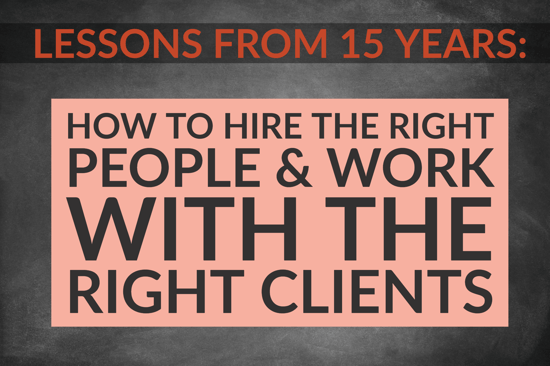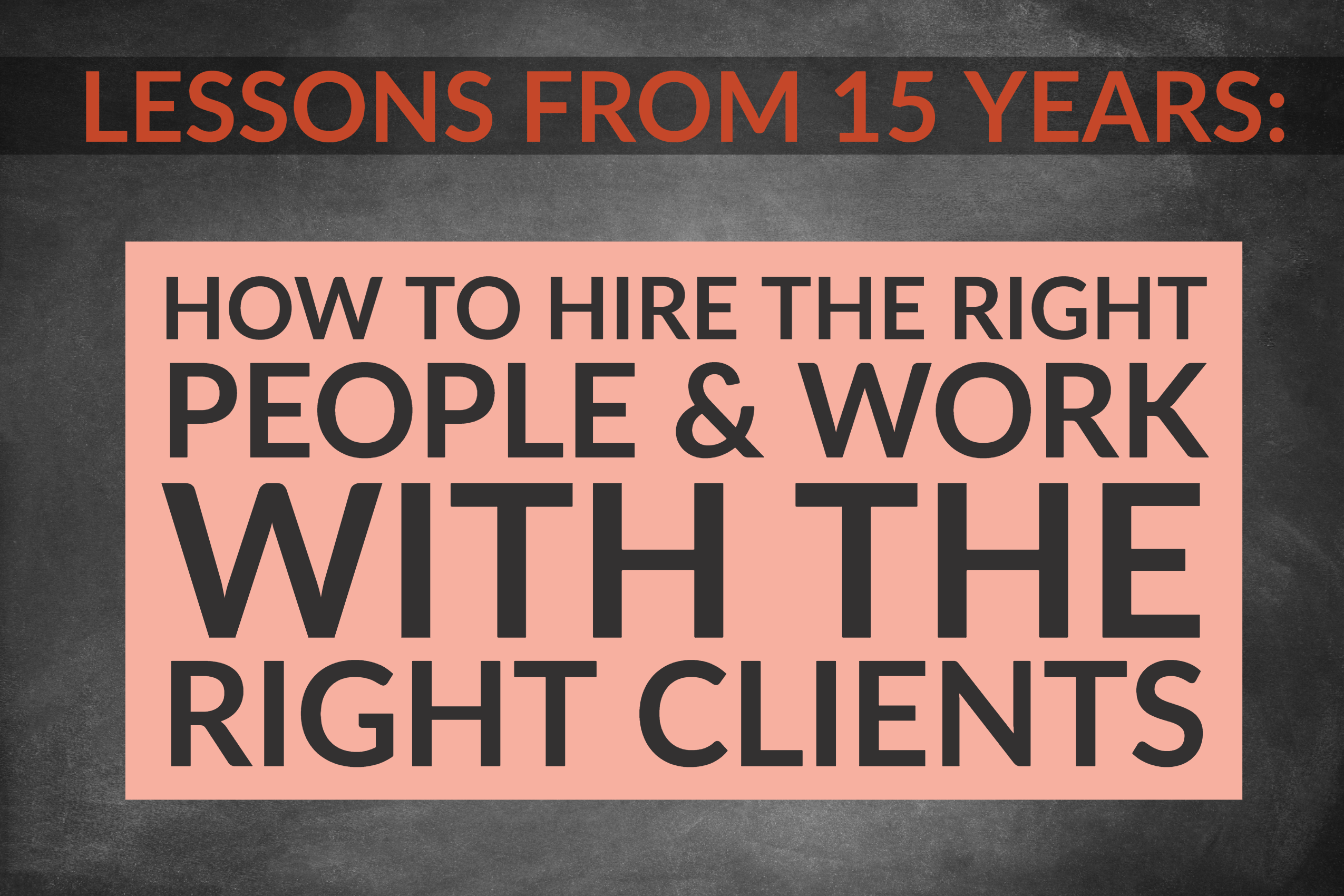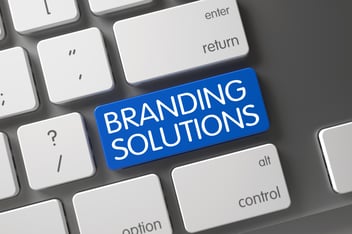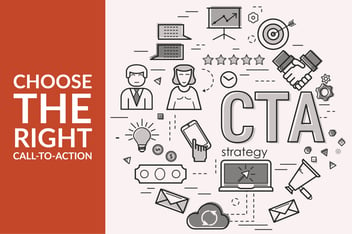Lessons From 15 Years: How To Hire The Right People & Work With The Right Clients

Sometimes the best way to learn how to do something right is by facing the consequences of doing it all wrong.
When it comes to hiring, I’ve made mistakes. And regretted them. But, I’ve also learned from them. Those mistakes, combined with what I know now about how I like to structure the workplace, have led me to develop a few guidelines I now keep in mind whenever I am hiring.
____________________________________________________________________
This post is one in a 15-part series looking back at the lessons learned in my 15 years as founder and owner of JONES Marketing & PR. Find the two most recent posts in the series here:
-
Lessons From 15 Years: Ask The Right Questions, Set Measurable Goals, & Deliver On Expectations
-
Lessons From 15 Years: Remember Not All B2C Purchase Decisions Are Emotional Impulse Buys
____________________________________________________________________
My Marketing Lesson #6: Hire experienced, self-motivated, reliable staff and be willing to drop toxic employees (or clients) quickly before they can cause more damage.
First, I should note, JONES does not have “a home office.” JONES operates as an entirely virtual agency, meaning everyone in the firm works from their own office – in their home. I had a regular office at one time, and I didn’t like it. I don’t want to ever have office space again. The reasons, beyond my own personal preference for working from my home, are intertwined with the lessons I’ve learned about hiring, and because my staff all work independently in their own space, making the right hiring decisions is absolutely essential.
JONES Hiring Guideline #1:
Hire experienced people.
The virtual nature of our agency requires hiring staff who have been there, done that, and aren’t afraid to figure out how to do it again without a lot of hand-holding and oversight.
I’m not saying that junior staff, just out of college, can’t be talented, but they are still learning. They require more coaching and mentorship, and that just isn’t something that works well with the virtual model.
I am looking for someone who can function autonomously, plan out projects, and complete high-quality work on time without frequent check-ins with me. They should be able to problem solve and answer questions largely on their own. Even better is someone who, as one project is winding down, comes to me to find out what is needed next — always looking for work, rather than having to be begged to do the work.
JONES Hiring Guideline #2:
Look beyond the bling.
One of my worst hires ever came across great in the interview. Just out of college, she was spunky (just like me), confident, seemingly ready to take on the world. She even had the confidence to ask for a ridiculously high salary for a recent graduate (more on that in the next section). She was a sparkling, shining personality, and just right for PR and marketing. Or not.
I was a new agency owner at the time, and fell into a trap that I have since learned to avoid: judging someone strictly on how they interview.
That hire turned into someone who ended up being the bad apple who spoiled an entire barrel of otherwise good employees, always feeling she was being wronged, and with that vivacious personality gathering others to her cause.
On the other hand, the best hire I ever made was someone I basically stumbled into, who joined the JONES team as a front desk person (back in our office location days), hired through a temp firm. She didn’t put herself out there as someone amazing (though she was and is). She wasn’t overly outgoing or sparkling and shiny. She just did her job. Very well.
In time, I noticed her writing was very good — her basic office reports were often more well-written and mistake-free than the content created by some of my employees who were hired specifically as writers—and gradually offered her the opportunity to work on some client work. More than 10 years later, she is still with JONES and is my best staff writer. Not only is she a great writer, but she is responsible, efficient, and self-motivated. I never question that she will get projects done, with outstanding quality, on time.
While it is easy to think that PR and marketing people should all be extroverts with big personalities, in reality, many of the roles in an agency like ours are better suited to the introverts, who can work steadily on their own, without an audience, a lot of guidance or constant confirmation. Don’t overlook the quiet people, even if in the world of PR and marketing there aren’t very many quiet people.
Extroverts have their place, too, obviously. Many agency owners and many business owners in general are extroverts. People who really enjoy being in front of a group are great for client engagement, but the best “worker bees” who are writing and designing and building websites in the background are often introverts who just want to focus on making what they do great. In a virtual workplace like ours with minimal day-to-day interaction, introverts are also more likely to be happy than extroverts, who feed off the presence and energy of a group. So, for us, it is also about finding a match that will make both the JONES team and the individual happy.
Personally, I like to come up with strategies, and do my jazz hands, and show the client our best work. I like getting excited about the new things. But too many sparkly jazz handers in one room can be challenging.
JONES Hiring Guideline #3:
Cut the cord quickly on toxic employees to control office drama.
OK, I said I would get back to that worst hire ever. She was just out of college, and in the interview originally asked for a salary of $90,000. For her first professional job. In the Midwest. 15 years ago. Ummm … no. That should have been a red flag, but I was still new to hiring and was taken in by her spunky personality.
When she accepted the job, at about a third of the salary, that should have been my second red flag. What can I say? I’ve learned a lot in my 15 years as an agency owner. Much of it the hard way.
It wasn’t long before she had convinced the rest of my staff, all also young people just getting started in the profession, that they were underpaid and overworked and that they should be expecting more. The office became a very toxic environment, when it had not been before I hired this person. By the time I finally let her go, I had to let nearly everyone go. I had to cut off the arm to save the rest of the body.
While this episode probably could have been avoided had I heeded the red flags and not hired her, or even made the call sooner to fire her, it also highlighted for me one of the challenges of a traditional office environment that is avoided with our virtual model: watercooler gossip, office drama and the spread of toxic attitudes between employees.
(What if you find yourself in a toxic work environment, but aren’t in a position to change who you are surrounded by? Check out these tips from our friends at HubSpot on keeping yourself from being dragged down: How To Deal With A Toxic Work Environment, According To Science.)
On a related note: Be just as wary of toxic clients!
Just as you should watch for red flags when hiring that might warn of employees who will make life in your organization more difficult than it should be, be just as aware of the potential for toxic clients to cause problems, from simple frustration to making you (or your staff) physically ill due to the stress.
Don’t set yourself or others on your team up to have to spend hours working with someone you won’t be able to get along with. If a potential client treats you poorly during a pitch, that treatment definitely won’t change once a contract is signed.
What are the signs of toxic client?
-
Constantly finding something wrong with anything you do.
-
Never providing positive or helpful feedback.
-
Not responding to communications.
-
Constantly asking for work that is outside the scope of the contract (without paying for it).
There are too many great clients out there to spend time with those that aren’t. And you definitely never want a bad client to be the reason you lose a good employee.
Why (and how) virtual works for my clients
The most obvious benefit to my clients of a virtual workplace is that I have no choice but to hire great people. Because I only hire experienced, senior level staff who turn out great work, on time, that means my clients always get great work, completed on time, by experienced, reliable people who take pride in what they do.
As a virtual agency, we do use time tracking and monitoring tools, but not simply to keep employees accountable (because, honestly, I’ve learned now to hire people who are accountable without Big Brother watching). The benefit my clients get from the time tracking we do as part of our virtual environment is in more accurate estimates and quotes for work to be completed. Because we track the time that goes into each project, and often each segment of an individual project, I can accurately bill and bid for our work, which is a benefit for our clients as well.
By hiring the best people possible, regardless of geographic location, providing them with the work-life balance of working from their own environment away from the distraction of office drama, and accurately estimating the time projects will require, I have found that a virtual environment works well for me, for my staff, and for my clients.
____________________________________________________________________
Check out these other blog posts and downloadable ebooks on hiring and other decisions to make about how to resource your marketing needs:
-
When Your New Hire For The Marketing Department Doesn’t Fit: What To Do
-
The CMO’s Guide To Resourcing Your Inbound Marketing Strategy
____________________________________________________________________
Hopefully, you won’t have to make the same hiring mistakes I did in order to learn these important truths. But I know that what I’ve learned has made JONES stronger along the way.
This is the 6th of 15 lessons I shared in honor of the 15th anniversary of the founding of JONES Marketing & PR. The next article in the series will focus on lessons that apply specifically to marketing in the financial technology — aka FinTech — industry. Keep checking back or subscribe to the Inbound Accelerator blog so you won’t miss it. And check out the first five lessons here.
-1.png?width=1652&height=294&name=Jones(RGB)-1.png)












